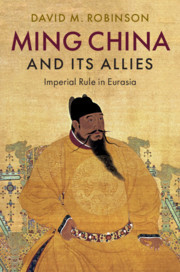Description
Ming China and its Allies
Imperial Rule in Eurasia
Author: Robinson David M.
Explores the Ming Dynasty's foreign relations with neighboring sovereigns, placing China in a wider global context.
Language: English
Subject for Ming China and its Allies:
Approximative price 43.23 €
In Print (Delivery period: 14 days).
Add to cart
Publication date: 01-2020
258 p. · 15.9x23.6 cm · Hardback
258 p. · 15.9x23.6 cm · Hardback
Description
/li>Contents
/li>Biography
/li>
On the eve of the early modern age, Ming emperors ruled around one-quarter of the globe's population, the majority of the world's largest urban centers, the biggest standing army on the planet, and the day's most affluent economy. Far from being isolated, the Ming court was the greatest center of political patronage in East Eurasia, likely the world. Although the Ming throne might trumpet its superiority, it understood its need for allegiance from ruling elites in neighbouring regions. In this major new study, David M. Robinson explores Ming emperors' relations with the single most important category of Eurasian nobles: descendants of Ghengis Khan and their Mongol supporters. Exploring the international dimensions of Chinese rule, this revisionist but accessible account shows that even rulers such as the Ming emperor needed allies and were willing to pay for them.
Introduction, 1. Zhu Di's march to power in a Chinggisid world; 2. Search for control; 3. Mongol nobles at the Ming court; 4. Tumu crisis in a Eurasion context: struggle for the Chinggisid mantle; 5. Tumu crisis (II) allies and commensurability; Conclusion.
David M. Robinson is Professor in Asian Studies and Professor of History at Colgate University, New York.
© 2024 LAVOISIER S.A.S.




